| Date | Text | |
|---|---|---|
30 Nov 1965

Walter C. Pitman |
Walter C. Pitman (earth science) Walter C. Pitman and James Heirtzler present the "magic" Eltanin marine magnetic anomaly profile that confirms the hypothesis of seafloor spreading at mid-ocean ridges. |
|
30 Nov 1965

Mountain Pygmy Possum |
Mountain Pygmy Possum (biology) The first live specimen of a Mountain Pygmy Possum (Burramys parvus), Australia's only truly hibernating marsupial, previously known only from the fossil record, is discovered. |
|
30 Nov 1965
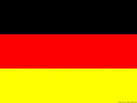
German |
German (biology) German entomologist Willi Hennig's Phylogenetic Systematics is published in English, advancing the study of cladistics. |
|
30 Nov 1965
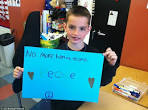
Martin Richards |
Martin Richards (computer science) Martin Richards designs the BCPL programming language. |
|
30 Nov 1965

Roger MacGowan |
Roger MacGowan (computer science) Roger MacGowan and Frederick Ordway first suggest the concept of machine superorganisms in Intelligence in the Universe. |
|
30 Nov 1965

Chen Jingrun |
Chen Jingrun (mathematics) Chen Jingrun publishes Chen's theorem: every sufficiently large even number can be written as the sum of a prime and a semiprime. |
|
30 Nov 1965

David Mumford |
David Mumford (mathematics) David Mumford introduces Mumford–Tate groups. |
|
30 Nov 1965

Gynecologist |
Gynecologist (physiology and medic) Gynecologist John McLean Morris and biologist Gertrude Van Wagenen at the Yale School of Medicine report the successful use of oral high-dose estrogen pills for post-coital contraception in women and rhesus macaque monkeys respectively. |
|
30 Nov 1965

Victor A. McKusick |
Victor A. McKusick (physiology and medic) Victor A. McKusick publishes the first edition of his catalogue of all known genes and genetic disorders, Mendelian Inheritance in Man. |
|
30 Nov 1965

Andreas Rett |
Andreas Rett (physiology and medic) Andreas Rett first describes Rett syndrome. |
|
30 Nov 1965
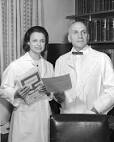
Masters and Johnson |
Masters and Johnson (psychology) Human Sexual Response is published by Masters and Johnson. |
|
30 Nov 1965

Konrad Lorenz |
Konrad Lorenz (psychology) On Aggression and Behind the Mirror are published by Konrad Lorenz. |
|
30 Nov 1965
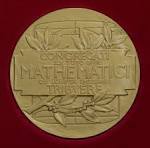
Fields Prize in Mathematics |
Fields Prize in Mathematics (awards) Fields Prize in Mathematics: Michael Atiyah, Paul Joseph Cohen, Alexander Grothendieck and Stephen Smale |
|
30 Nov 1965

Turing Award |
Turing Award (awards) Turing Award – Alan Perlis |
|
15 Jan 1966

Sergei Korolev |
death Sergei Korolev Sergei Korolev (born 1907), Soviet space scientist. |
|
03 Feb 1966
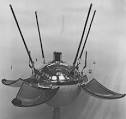
Luna 9 |
Luna 9 (astronomy and space ) The unmanned Soviet Luna 9 spacecraft makes the first controlled rocket-assisted landing on the Moon. |
|
05 Feb 1966

Ludwig Binswanger |
death Ludwig Binswanger Died 5 Feb 1966 at age 84 (born 13 Apr 1881). Swiss psychiatrist who founded existential analysis. He was born into a family of noted psychiatrists, including his father Ludwig, his grandfather Robert and his great-uncle Otto. He first met Carl Jung while working at the psychiatric hospital in Zurich. Their visit together with Sigmund Freud in Vienna (1907) led to Binswanger taking up psychoanalysis. He developed an interest in the ideas of Edmund Husserl, Martin Heidegger and Martin Buber, and his perspective evolved more along existential than Freudian lines. He applied the principles of existential phenomenology, especially as expressed by Heidegger, to psychotherapy, and can be said to have been the first truly existential therapist. |
|
01 Mar 1966

Venera 3 |
Venera 3 (astronomy and space ) Venera 3 Soviet space probe crashes on Venus becoming the first spacecraft to land on another planet's surface. |
|
01 Mar 1966
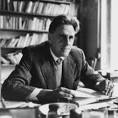
Fritz Houtermans |
death Fritz Houtermans Fritz Houtermans (born 1903), Prussian-born Dutch physicist. |
|
12 Mar 1966
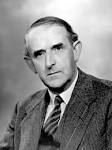
Sydney Camm |
death Sydney Camm Sydney Camm (born 1893), English aircraft designer. |
|
16 Mar 1966
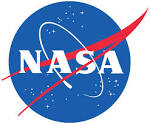
NASA |
NASA (astronomy and space ) NASA spacecraft Gemini 8 (David Scott, Neil Armstrong) conducts the first docking in space, with an Agena target vehicle. |
|
31 Mar 1966
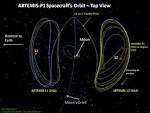
Moon orbited |
Moon orbited In 1966, Luna 10, the first spacecraft to orbit the moon, was launched by the USSR from an Earth orbiting platform. It entered lunar orbit on 3 Apr 1966 and completed its first orbit 3 hours later. The scientific instruments on board included a gamma-ray spectrometer, triaxial magnetometer, and a meteorite detector. Other instruments investigated the solar-plasma, infrared emissions from the Moon, radiation conditions of the lunar environment and gravitational studies. Luna 10 transmitted the Internationale during the 23rd Congress of the Communist Party of the Soviet Union. It was battery powered, operated for 460 lunar orbits and made 219 radio data transmissions before 30 May 1966, when its batteries were out of power. |
|
31 Mar 1966
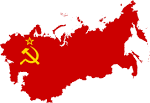
Soviet Union |
Soviet Union (astronomy and space ) The Soviet Union launches Luna 10 which later becomes the first spacecraft to enter orbit around the Moon. |
|
13 Jun 1966

Grigori Perelman |
birth Grigori Perelman Grigori Perelman, Russian mathematician. |
|
20 Jun 1966
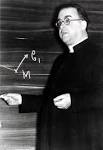
Georges Lemaître |
death Georges Lemaître Monsignor Georges Lemaître (born 1894), Belgian physicist. |
|
07 Jul 1966
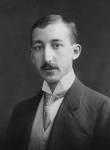
George de Hevesy |
death George de Hevesy George de Hevesy (born 1885), Hungarian winner of the Nobel Prize in Chemistry. |
|
08 Jul 1966
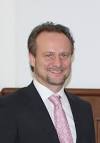
Ralf Altmeyer |
birth Ralf Altmeyer Ralf Altmeyer, German virologist. |
|
07 Aug 1966
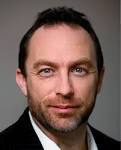
Jimmy Wales |
birth Jimmy Wales Jimmy Wales, American internet entrepreneur. |
|
10 Aug 1966

F. A. Vening Meinesz |
death F. A. Vening Meinesz Died 10 Aug 1966 at age 79 (born 30 Jul 1887). Felix Andries Vening Meinesz was a Dutch geophysicist and geodesist who was known for his measurements of gravity at sea for which he devised the Vening Meinesz pendulum apparatus with comparable accuracy as on land. Starting in 1923 he conducted several global gravity surveys on voyages on submarines, particularly to and in the Indonesian Archipelago. He detected strong gravity anomaly belts running parallel to the Indonesian deep sea trenches. He explained these Meinesz belts as sites of downbuckling of the Earth's crust. He introduced the concept of regional isostasy taking flexure of an elastic crust into account. He also contributed to physical geodesy: The Vening Meinesz formula connects the deviation of the vertical from the plumbline to gravity anomalies. |
|
23 Aug 1966

First photograph of the Earth from Moon |
First photograph of the Earth from Moon In 1966, the Lunar Orbiter 1 took the first photograph of the Earth from the Moon. In grainy black and white, the earthrise picture was made using computer imaging that was then in its infancy. As then released to the public, the image looked starkly black and wide with poor resolution. Forty-two years later, an Image Recovery Project used restored 1960s tape drives to access the original analog data from the tapes. With modern digital processing, a striking level of detail was obtained in a much higher resolution picture. Yet, that image was an after-thought, because the essential purpose of the Lunar Orbiter mission was to identify suitable landing sites on the moon surface in preparation for the manned missions to the moon. |
|
23 Sep 1966

Vladimir Veksler |
death Vladimir Veksler Died 23 Sep 1966 at age 59 (born 4 Mar 1907). Soviet physicist. |
|
01 Nov 1966
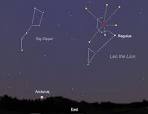
Leonids |
Leonids (astronomy and space ) Notable display of the Leonids over the Americas. |
|
15 Dec 1966
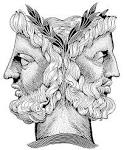
Janus |
Janus (astronomy and space ) Janus, one of the moons of Saturn, is identified by Audouin Dollfus (it had been first photographed on October 29). |
|
18 Dec 1966

Epimetheus |
Epimetheus (astronomy and space ) Epimetheus, another of the moons of Saturn, is discovered, but mistaken for Janus which shares its orbit and they are not distinguished until 1978. |